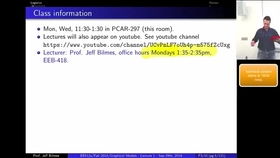Content:
Fishing, an age-old pastime, has been a source of relaxation and sustenance for countless individuals around the world. Among the various techniques employed by anglers, the art of catching small-sized floating bait with a small mouth float has gained popularity for its precision and challenge. This article delves into the essential techniques and tips that will help you master the craft of small mouth float fishing.
Understanding the Equipment
Before we delve into the techniques, it's crucial to understand the equipment involved in small mouth float fishing. The key components include:
Small Mouth Float: These floats are designed to be small and light, often no larger than 1.5 inches in diameter. They are ideal for detecting subtle movements in the water and are typically made from materials like plastic or foam.

Line: Use a monofilament line with a diameter of 0.10 to 0.20 mm. The lighter the line, the better it will detect the smallest of movements.
Hook: A small hook, usually a size 8 or 10, is sufficient for small baitfish. The hook should be sharp and strong enough to hold the bait securely.
Leader: A leader of about 30 cm (12 inches) in length, made from monofilament or fluorocarbon, connects the float to the hook. This leader serves to protect the hook from being damaged by the float.
Bait: Small baitfish, such as minnows or shad, are commonly used. The bait should be small enough to fit comfortably on the hook.
Setting Up the Rig
Attach the Float: Thread the leader through the eye of the float and tie a simple overhand knot to secure it. Trim any excess leader.
Add the Hook: Tie the hook to the end of the leader using a palomar knot or a similar secure knot. Ensure the hook is positioned at the desired depth in the water column.
Adjust the Float: The float should be set so that it is just slightly above the water surface. This allows you to detect the smallest of bites as the bait moves with the currents.
Techniques for Catching Small Mouth Float
Patience is Key: Small mouth float fishing requires patience. The bites are often subtle and may go unnoticed. Wait for the float to move before setting the hook.
Watch for Subtle Movements: The float will move in response to the smallest of movements from the bait. Pay close attention to these movements, as they are often the only indication of a bite.
Set the Hook Gently: When you detect a bite, gently set the hook. A sudden, forceful pull can result in a missed catch or a damaged hook.
Use the Current: If you're fishing in a river or stream, use the current to your advantage. Position the bait in the current so that it mimics the natural movement of small baitfish.
Adjust Your Presentation: Experiment with different presentations to see what works best. Sometimes, a slow and steady retrieve works better, while other times, a faster retrieve may trigger more bites.
Be Mindful of Weather Conditions: Windy conditions can make it difficult to detect subtle movements in the float. On such days, try fishing in calm, protected areas.
Keep Your Eyes on the Float: Continuously monitor the float for any changes in its position. This will help you detect bites and react quickly.
Final Tips
- Practice Makes Perfect: Like any skill, small mouth float fishing takes practice. Spend time on the water to refine your technique and develop a better understanding of the fish's behavior.
- Stay Informed: Keep up with the local fishing reports and weather conditions. This information will help you choose the best spots and times to fish.
- Respect the Environment: Always practice catch-and-release fishing to preserve the local fish population. Additionally, ensure that you dispose of any trash properly.
In conclusion, mastering the art of small mouth float fishing requires patience, practice, and a keen eye for detail. By understanding the equipment, setting up the rig correctly, and employing the right techniques, you'll be well on your way to becoming a proficient small mouth float angler. Happy fishing!












